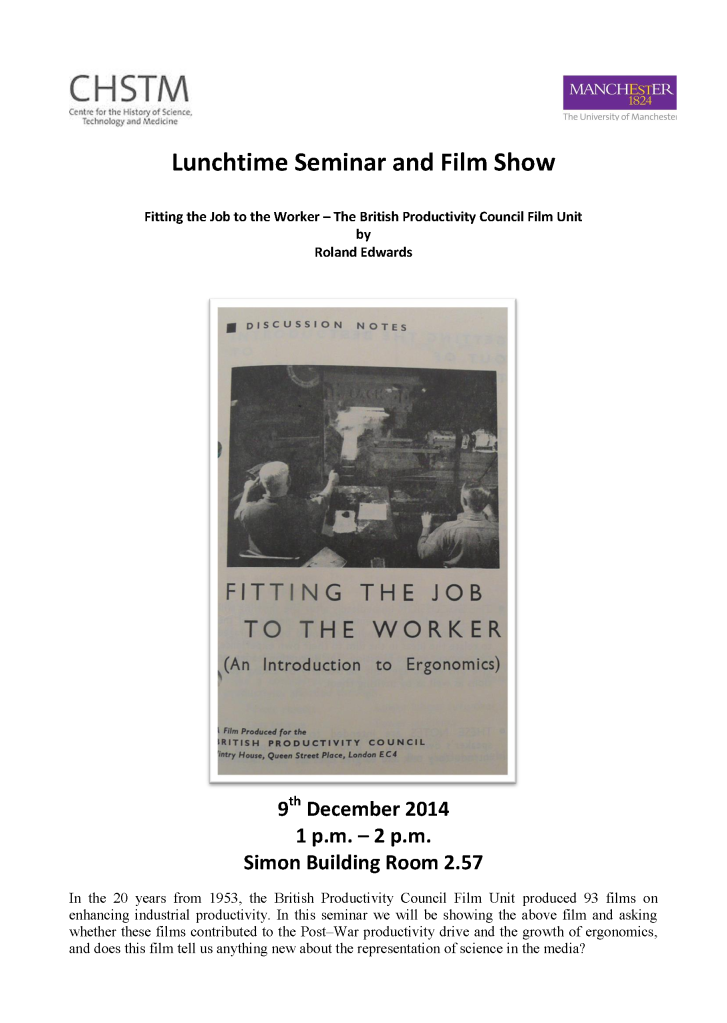Fitting the Job to the Worker – The British Productivity Council Film Unit
The British Productivity Council (BPC), established by the UK government in 1952, was charged with stimulating “the improvement of productivity in every sector of the national economy by every possible means”. The BPC attempted to fulfil this directive by establishing a programme of inter-factory visits, seminars and conferences on productivity. It published its own newspaper, the Target, which was distributed amongst the industrial base and also produced films for showing on both television and at factories which. Surprisingly little is known about the Unit, it does not feature in Tim Boon’s Films of Fact and there is only a very short article by Tim Boon, ‘People, Productivity and Change: Peter Bradford’, in “Shadows of Progress: Britain’s Forgotten Post-War Documentaries”, edited by Patrick Russell and James Taylor, 118–40. Basingstoke: BFI / Palgrave, 2010. Archival material relating to the film unit and its directing and production staff is scarce and is scattered around the UK.
Between 1953 and 1975, the film unit, which was based at the Merton Park Studios, produced 93 films which covered such diverse topics as the resolution of industrial disputes, conduct of work study programmes, poultry feeding and egg collection and, the topic of this presentation, ergonomics. In practice films would be sent out to factories with an accompanying set of notes. The education officer, or similar, was then expected to show the film and lead a discussion on the content using the supplied notes. We have no information on how these films were received or if they had any material impact.
Before showing the film I will briefly outline why this particular film was made and describe the accompanying briefing notes. I will also quickly explain the role the film played in the development of ergonomics in the 1960s. After the showing, which lasts 25 minutes I would like to hold a discussion on its content, representation of science and possibly map out a future research programme to examine this important but largely forgotten episode in both documentary film and productivity history.
